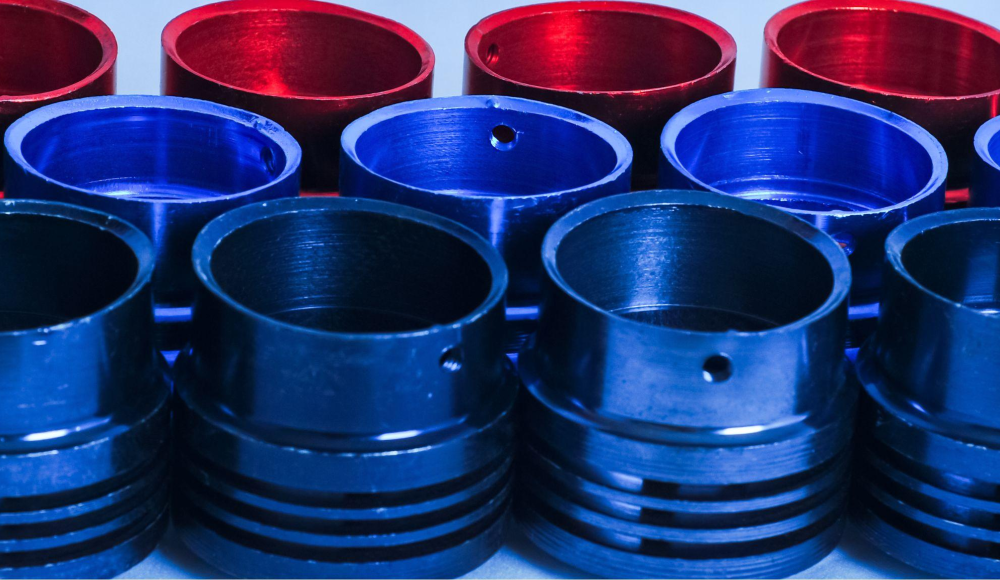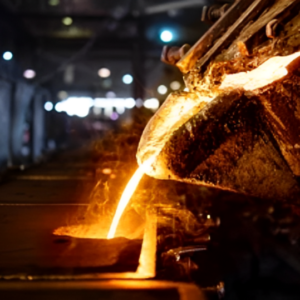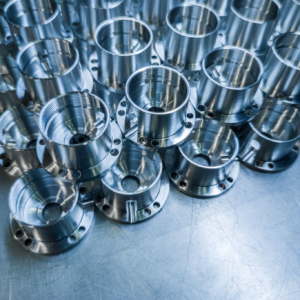Are you seeking a durable, corrosion-resistant solution for titanium? Titanium anodizing could be the answer. This process improves titanium’s surface and provides protection and an aesthetic look. Many industries, including aerospace, automotive, and medical, rely on anodized titanium for its strength and reliability.
Titanium anodizing involves creating a protective oxide layer. This layer improves corrosion resistance, durability, and even aesthetics. If you’re looking to increase the lifespan and performance of titanium components, this process is beneficial.
Please keep reading to understand how titanium anodizing works and its benefits. Let’s get into the technical details and applications of the titanium anodizing process.
How Titanium Anodizing Works and Its Benefits?
The titanium anodizing process is done by employing an electrical current. In the process, the titanium part is put into an electrolytic tank normally comprising of acid. Subsequently, when a current is passed through the solution, an oxide layer is formed on the titanium surface.
This oxide layer is chemically very stable and hardly corrodes. The coating guards the titanium from extreme conditions and increases the time of its use. Furthermore, the thickness of the oxide layers can be adjusted to desirable values when being manufactured.
Anodizing also modifies the appearance of titanium with bright colors. This leads to a cause of interference effects which in turn produce different shades. These colors do not peel off thus adding both utility and aesthetic value to the material.
In general, titanium anodizing signifies the features of a material, both functional and aesthetic. It is mostly used in the aerospace industry and automotive, and its application also spread to other sectors such as medicine.
Types of Titanium Anodizing
Here are the common types of titanium anodizing:
1. Sulfuric Acid Anodizing (Type II)
The most popular type is sulfuric acid anodizing. It is capable of creating a thicker oxide layer for added and improved durability. This process is usually applied in the aerospace and automotive markets.
2. Phosphoric Acid Anodizing
Phosphoric acid anodizing is applied to improve the sticking on the surface. In addition, it produces a uniform surface finish fit for painting and coating ventures. The process is mainly used in the manufacturing of medical and industrial parts.
3. Hard Anodizing (Type III)
Hard anodizing forms a much denser oxide layer than normal anodizing. This type is most frequently used for parts that are likely to undergo wear and tear through abrasion.
4. Color Anodizing
Anodizing leaves titanium in bright and long-lasting colors through the process of dyeing. The process is generally applied for aesthetic and practical utilization. The colors produced are quite permanent and are least prone to fading.
5. Chromic Acid Anodizing (Type I)
Chromic acid anodizing is less severe than sulfuric anodizing, which provides more slender oxide layers. It has great corrosion protection and is used particularly in military and aerospace industries.
Key Differences between Type 2 and Type 3 Titanium Anodizing
| Factors | Type 2 Anodizing | Type 3 Anodizing |
| Process | Sulfuric Acid Electrolyte | Sulfuric Acid with Higher Voltage |
| Oxide Layer Thickness | Typically, 1-5 microns | Typically 25-100 microns |
| Corrosion Resistance | High | Superior |
| Durability | Standard durability for most applications | High wear and abrasion resistance |
| Color Range | Limited color range (mainly iridescent) | Limited to muted colors (e.g., dark gray) |
| Surface Hardness | Moderate | High, up to 60 HRC |
| Common Uses | Aerospace, automotive, general industries | Aerospace, military, heavy-duty machinery |
| Cost | Less expensive | More expensive due to higher requirements |
| Thickness Control | Less precise control of oxide thickness | Precise control over oxide thickness |
| Electrical Requirements | Standard voltage (15-25V) | High voltage (40-150V) |
What Are The Benefits of Titanium Anodizing?
The common benefits of titanium anodizing include:
1. Increased Corrosion Protection
The corrosion resistance of titanium is many times increased by anodizing. Anodized titanium parts It does not corrode easily, especially in dry, and extreme temperature conditions thus suitable for Aerospace, Marine, and Medical applications.
2. Improved Durability
As an anodizing process placing titanium through an electrochemical process adds to the wear resistance. It also increases the durability acting as a buildup to the frequent harsh usage over time.
3. Aesthetic Appeal
Anodizing also permits you to achieve very bright and long-lasting colors. The oxide layer gives amazing-looking so-called metallic and pearlescent types of paints that not only serve protective roles but are pretty as well and do not fade over time.
4. Reduced Friction
The anodized surface provides low friction; perfect for the moving parts of an identical product. In the usage of titanium, especially in the manufacture of machinery or mechanical equipment, anodizing lessens friction improving the machines’ efficiency and durability.
5. Biocompatibility
Titanium anodizing is strongly biocompatible. It makes titanium medically safe. This passive coating makes anodized titanium ideal for use in implants and devices in direct contact with tissue.
What Are The Challenges in Titanium Anodizing?
Besides benefits, titanium anodizing also poses a few challenges. These limitations include:
1. Control Over Oxide Thickness
Thickness control of oxides is sometimes challenging to achieve with high accuracy. Since voltage and conditions in the bath change over time, layers do not come out uniform and may impact performance and appearance.
2. Surface Preparation Requirements
The type or quality of surface preparation substantially affects the anodizing outcome. Residues and the presence of defects on the substrate surface are detrimental to adhesion and the top quality of the oxide layer.
3. Equipment and Energy Costs
The anodizing process necessitates high energy utilization and specialized equipment. These push factors raise operational costs even for industries that are in large-scale production.
4. Environmental Impact
The bath solution used in the anodizing process is made up of chemicals that must be treated properly and then disposed of. This means that failure to properly dispose of the waste poses some dangers to the natural environment and such comes with dangerous implications. Therefore, handling it must be done under high safety measures.
5. Limited Color Control
Controlling colors while anodizing titanium will yield vivid ones, yet replicating those colors, and getting the same shade each time are not easy. Many changes in oxide layer thickness contribute to varied color outcomes.
Where Titanium Anodizing Is Used?
- Aerospace: Aircraft components, turbine blades, fasteners
- Medical: Implants, prosthetics, surgical instruments
- Automotive: Exhaust systems, engine parts, suspension components
- Marine: Propellers, boat fittings, seawater valves
- Sports Equipment: Bicycle frames, golf clubs, fishing rods
- Architecture: Facades, roofing panels, structural elements
- Consumer Electronics: Laptop housings, smartphone cases, connectors
- Jewelry: Rings, bracelets, earrings
- Military: Weapon parts, armor, structural components
- Optics: Telescope housings, camera parts, lenses
Titanium Anodizing Best Practices
Let’s take a look at the best practices for optimum outcomes in the titanium anodizing process:
1. Proper Surface Preparation
Surface preparation is critical for successful anodizing. Clean titanium parts thoroughly to remove oils, dirt, and oxide layers. Use a combination of abrasive cleaning and chemical treatments to ensure optimal adhesion of the oxide layer.
2. Control Bath Temperature
Maintain a consistent bath temperature during anodizing. Ideal temperatures typically range from 18°C to 22°C (64°F to 72°F). Fluctuations can result in inconsistent oxide layers, affecting both performance and appearance.
3. Monitor Voltage and Current
Precise control of voltage and current is essential. Use a constant current power supply to maintain steady voltage throughout the anodizing process. This helps achieve uniform oxide thickness and color consistency.
4. Use High-Quality Electrolyte Solutions
Ensure the electrolyte bath is well-maintained and free from impurities. For sulfuric acid anodizing, high-purity sulfuric acid is preferred. Regularly filter the solution to avoid contamination that could impact anodizing results.
5. Proper Post-Treatment
After anodizing, rinse the parts thoroughly to remove residual acid. Post-anodizing treatments like sealing the oxide layer with heat or cold water improve corrosion resistance and enhance color durability.
6. Optimize Oxide Layer Thickness
Control the oxide layer thickness based on the part’s intended application. For high-durability applications, such as aerospace or military, thicker oxide layers (Type 3) are preferred, while thinner layers (Type 2) are suitable for decorative purposes.
7. Test and Inspect
Regularly test anodized parts for quality. Conduct tests like thickness measurement, color consistency, and corrosion resistance to ensure compliance with industry standards. Visual inspection is essential for identifying defects early in the process.
Materials Needed to Anodize Titanium
- Titanium Workpiece: The part to be anodized, is typically cleaned before the process.
- Electrolyte Solution: A chemical bath (sulfuric acid, phosphoric acid) for the anodizing reaction.
- Power Supply: Provides controlled DC voltage to the titanium during titanium anodizing.
- Electrodes: Conduct electricity to the titanium and complete the circuit.
- Distilled Water: Used to rinse the titanium before and after anodizing.
- Cleaning Agents: Remove oils, dirt, and previous oxide layers from the titanium.
- Sealing Agents: Seal the oxide layer for improved corrosion resistance.
- Protective Gloves and Safety Gear: Essential for personal protection while handling chemicals.
- Filtration System: Keeps the electrolyte bath clean and free from contaminants.
- Temperature Control Equipment: Maintains consistent bath temperatures for optimal anodizing.
Titanium Anodizing vs. Aluminum Anodizing
| Factor | Titanium Anodizing | Aluminum Anodizing |
| Oxide Layer Thickness | Typically 1-5 microns (Type 2), up to 100 microns (Type 3) | Typically 5-25 microns |
| Oxide Hardness | Very high (up to 60 HRC with hard anodizing) | Moderate (20-40 HRC depending on process) |
| Corrosion Resistance | Excellent, highly resistant to harsh environments | Good, but less resistant than titanium in extreme conditions |
| Color Variations | Produces vibrant, durable colors, especially with thicker layers | Limited color range, more dependent on oxide thickness |
| Applications | Aerospace, medical implants, marine, military | Automotive, architectural, consumer electronics |
Conclusion
Titanium Anodizing improves both the durability and appearance of titanium parts. The process creates a robust oxide layer, offering exceptional corrosion resistance and wear protection. This makes anodized titanium a critical material in industries such as aerospace, medical, and automotive, where precision and performance are essential.
Looking for top-tier anodizing services?
Contact Tops Precision today for exceptional precision and quality anodizing solutions.
FAQs
Q1. How does the thickness of the oxide layer affect titanium’s properties?
The oxide layer thickness directly influences corrosion resistance, wear resistance, and color. Thicker layers offer better protection and durability, especially in harsh environments.
Q2. Can titanium anodizing be used for all types of titanium alloys?
Yes, titanium anodizing can be applied to most titanium alloys, but the results may vary based on the alloy’s composition. Some alloys may require adjustments in process parameters.
Q3. Is anodized titanium suitable for medical implants?
Yes, anodized titanium is widely used in medical implants due to its biocompatibility, corrosion resistance, and ability to form a non-reactive oxide layer, ensuring safety for long-term implantation.
Q4. How does the anodizing process affect the color of titanium?
Color variation in anodized titanium occurs due to interference effects caused by the oxide layer thickness. By adjusting voltage and process conditions, a wide range of colors, including gold, blue, purple, and green, can be achieved.



